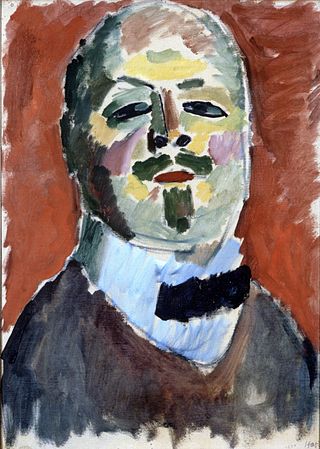
Alexej Georgewitsch von Jawlensky, surname also spelt as Yavlensky, was a Russian expressionist painter active in Germany. He was a key member of the New Munich Artist's Association, Der Blaue Reiter group and later the Die Blaue Vier.
Events from the year 1925 in art.
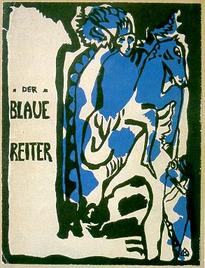
Der Blaue Reiter is a designation by Wassily Kandinsky and Franz Marc for their exhibition and publication activities, in which both artists acted as sole editors in the almanac of the same name, first published in mid-May 1912. The editorial team organized two exhibitions in Munich in 1911 and 1912 to demonstrate their art-theoretical ideas based on the works of art exhibited. Traveling exhibitions in German and other European cities followed. The Blue Rider disbanded at the start of World War I in 1914.

Marianne von Werefkin was a Russian artist, whose work is celebrated as a central part of German Expressionism.

The San Diego Museum of Art is a fine arts museum located at 1450 El Prado in Balboa Park in San Diego, California that houses a broad collection with particular strength in Spanish art. The San Diego Museum of Art opened as The Fine Arts Gallery of San Diego on February 28, 1926, and changed its name to the San Diego Museum of Art in 1978. The official Balboa Park website calls the San Diego Museum of Art "the region's oldest and largest art museum". Nearly half a million people visit the museum each year.

The Neue Künstlervereinigung München (N.K.V.M.), was an Expressionism art group based in Munich. The registered association was formed in 1909 and prefigured Der Blaue Reiter, the first modernist secession which is regarded as a forerunner and pathfinder for Modern art in 20th-century Germany.

Alexander Kanoldt was a German magic realist painter and one of the artists of the New Objectivity.

The Museum Wiesbaden is a two-branch museum of art and natural history in the Hessian capital of Wiesbaden, Germany. It is one of the three Hessian State museums, in addition to the museums in Kassel and Darmstadt.
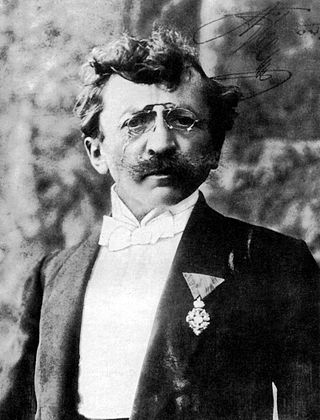
Anton Ažbe was a Slovene realist painter and teacher of painting. Ažbe, crippled since birth and orphaned at the age of eight, learned painting as an apprentice to Janez Wolf and at the Academies in Vienna and Munich. At the age of 30, Ažbe founded his own school of painting in Munich that became a popular attraction for Eastern European students. Ažbe trained the "big four" Slovenian impressionists, a whole generation of Russian painters and Serbian painters Nadežda Petrović, Beta Vukanović, Ljubomir Ivanović, Borivoje Stevanović, Kosta Miličević, and Milan Milovanović.

20th-century Western painting begins with the heritage of late-19th-century painters Vincent van Gogh, Paul Cézanne, Paul Gauguin, Georges Seurat, Henri de Toulouse-Lautrec, and others who were essential for the development of modern art. At the beginning of the 20th century, Henri Matisse and several other young artists including the pre-cubist Georges Braque, André Derain, Raoul Dufy and Maurice de Vlaminck, revolutionized the Paris art world with "wild", multi-colored, expressive landscapes and figure paintings that the critics called Fauvism. Matisse's second version of The Dance signified a key point in his career and in the development of modern painting. It reflected Matisse's incipient fascination with primitive art: the intense warm color of the figures against the cool blue-green background and the rhythmical succession of the dancing nudes convey the feelings of emotional liberation and hedonism.

Galka Scheyer was a German-American painter, art dealer, art collector, and teacher. She was the founder of the "Blue Four," an artists' group that consisted of Lyonel Feininger, Wassily Kandinsky, Paul Klee and Alexej von Jawlensky.
The year 1941 was marked by many events that left an imprint on the history of Soviet and Russian Fine Arts.
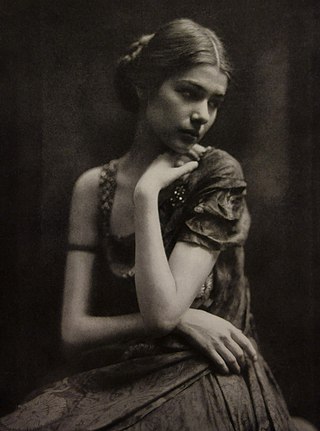
Clotilde Margarete Anna Edle von der Planitz, known professionally as Clotilde von Derp, was a German expressionist dancer, an early exponent of modern dance. Her career was spent essentially dancing together with her husband Alexander Sakharoff with whom she enjoyed a long-lasting relationship.

Albert Weisgerber was a German painter whose work forms a bridge between Impressionism and early Expressionism.
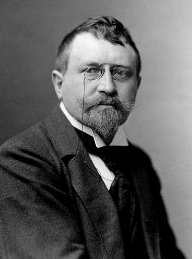
Hugo Curt Herrmann was a German Impressionist and Neo-Impressionist painter; associated with the Berlin Secession.
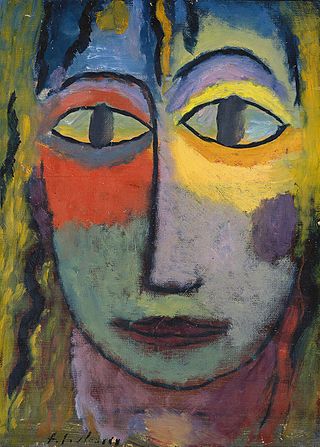
Medusa or Head of a Woman "Medusa", Light and Shadow is a 1923 Expressionist painting by Russian painter Alexej von Jawlensky. It is held in the Musée des Beaux-Arts de Lyon, which acquired it in 1936. It is an work by the artist from the time when he began to focus on painting the human figure, in 1917.

Hanna Bekker vom Rath was a German painter, collector, patron and gallerist.
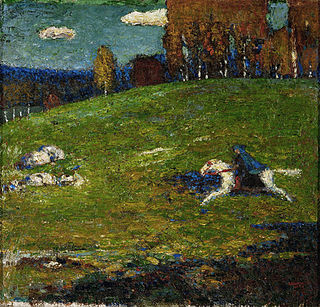
The Blue Rider is an oil painting executed in Bavaria in 1903 by the Russian emigré artist Wassily Kandinsky. It is now held in a private collection in Zürich, and shares its name with the art movement he would co-found with Franz Marc in the early 1910s.
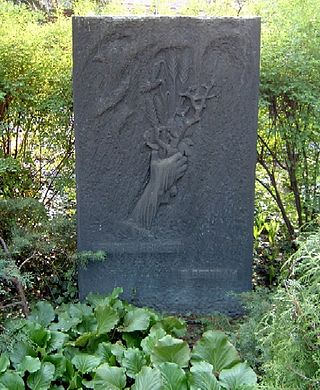
Heinrich Ehmsen was a German painter and graphic artist.

Erster Deutscher Herbstsalon was the title of an art exhibition that was organized in 1913 by Herwarth Walden in Berlin.


















